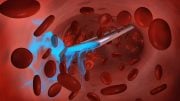
Researchers have discovered a significant connection between zinc levels in humans and reduced risk of type 2 diabetes and fatty liver disease. The study, published in eLife, shows that a specific loss-of-function mutation in the SLC39A5 zinc transporter protein is associated with elevated zinc levels, leading to a lower diabetes risk, reduced insulin resistance, and decreased liver fat buildup in genetically engineered mice, pointing towards SLC39A5 as a possible therapeutic target for these conditions.
Genetic analysis in humans and mice identify a zinc transporter as a potential target for therapy in type 2 diabetes and fatty liver disease.
Researchers have discovered a mechanistic connection between levels of zinc in human bodies and the risk of type 2 diabetes and fatty liver disease.
This research, recently published in eLife, is hailed by editors as a foundational study that significantly enhances our understanding of zinc’s impact on metabolism.
The researchers provide solid evidence through their state-of-the-art genetic analysis of a large population of human participants and comprehensive lab studies of a potential therapeutic target for non-alcoholic fatty liver disease and type 2 diabetes. The results will be of interest to researchers working on metabolism and the biology of trace elements alike.
Converging lines of evidence have shown that zinc plays a crucial role in insulin production and glucose metabolism. “We know that increasing zinc intake improves blood glucose control in people with prediabetes or type 2 diabetes, and people with a mutation in a key zinc transporter protein have reduced risk of diabetes.” says first author Shek Man Chim, Principal Scientist at Regeneron Pharmaceuticals, Inc., New York, US. “However, the mechanism for how zinc influences systemic blood glucose levels and diabetes risk remains unclear.”
To explore the diabetes-protective role of zinc, Chim and colleagues tested loss-of-function mutations from genetic sequence data collected from a large population of participants of European ancestry who took part in the Regeneron Genetics Center-Geisinger Health System DiscovEHR study. This identified a rare mutation that causes loss of function in a zinc transporter protein called SLC39A5, associated with increased circulating zinc levels.
To confirm this, they looked at how loss-of-function mutations in SLC39A5 were associated with type 2 diabetes in a meta-analysis of four multi-ethnic European and US studies totaling >62,000 cases of diabetes and >518,000 healthy controls. This confirmed that circulating zinc levels in carriers of the SLC39A5 loss-of-function mutation were elevated and associated with a reduced risk of diabetes.
Having identified SLC39A5 as an important clinical link between zinc and diabetes, the team explored its function by genetically engineering mice lacking the zinc transporter protein. As anticipated, these mice had elevated blood and tissue levels of zinc. When the team fed mice a high-fat, high-fructose diet to induce obesity, there was a significant reduction in fasting glucose compared to the control mice fed the same diet. Similar results were observed in a congenital (leptin receptor-deficiency) model of obesity. Loss of SLC39A5 also resulted in reduced insulin resistance – a hallmark of diabetes where tissues fail to respond to insulin signals trying to trigger glucose uptake from the blood.
Given that diabetes often coincides with non-alcoholic fatty liver disease, the team explored whether loss of SLC39A5 protects the liver, too. As hoped, mice lacking SLC39A5 had less build-up of fat in the liver and in blood markers of liver damage. Moreover, mice lacking SLC39A5 but fed a high-fat, high-fructose diet also had less fat accumulation in the liver and improved insulin sensitivity compared to control mice.
The improvements seen in the livers of mice lacking SLC39A5 prompted the researchers to see whether loss of SLC39A5 protects against progression of non-alcoholic fatty liver disease to non-alcoholic steatohepatitis (NASH), a more severe liver inflammation that leads to potentially irreversible scarring (fibrosis). They used a high-fat, high-cholesterol diet to induce NASH in mice and found increased markers of liver damage, body weight, fasting blood glucose, and liver fibrosis. By contrast, the mice lacking SLC39A5 had reduced liver damage markers, fasting blood glucose, and improvements in liver inflammation and fibrosis.
One concern highlighted by public reviewers was that observed differences in the metabolic consequences of SLC39A5 inactivation between male and female mice remained unclear. Further work will need to explore this further, as well as characterize the role of SLC39A5 in pancreatic cell function and glucose tolerance more fully.
“Our study provides for the first-time genetic evidence demonstrating the protective role of zinc against high blood sugar and unravels the mechanistic basis underlying this effect,” concludes senior author Harikiran Nistala, currently Head of functional Genomics at Alkermes Inc, Waltham, US. “Our observations suggest that blocking SLC39A5 could be a potential therapeutic avenue for type 2 diabetes and other indications where zinc supplementation alone is inadequate.”
Reference: “Genetic inactivation of zinc transporter SLC39A5 improves liver function and hyperglycemia in obesogenic settings” by Shek Man Chim, Kristen Howell, John Dronzek, Weizhen Wu, Cristopher Van Hout, Manuel Allen Revez Ferreira, Bin Ye, Alexander Li, Susannah Brydges, Vinayagam Arunachalam, Anthony Marcketta, Adam E Locke, Jonas Bovijn, Niek Verweij, Tanima De, Luca Lotta, Lyndon Mitnaul, Michelle G. LeBlanc, David Carey, Olle Melander, Alan Shuldiner, Katia Karalis, Aris N. Economides and Harikiran Nistala, 18 September 2023, eLife.
DOI: 10.7554/eLife.90419.1









Be the first to comment on "Zinc’s Hidden Role in Diabetes – Scientists Discover Mechanistic Link"